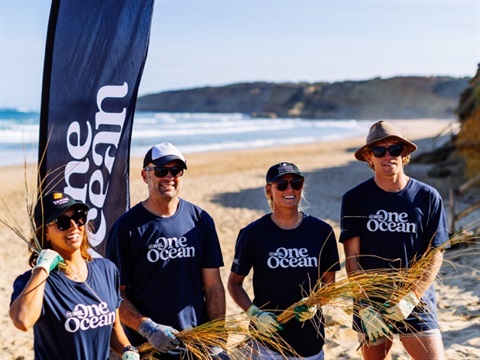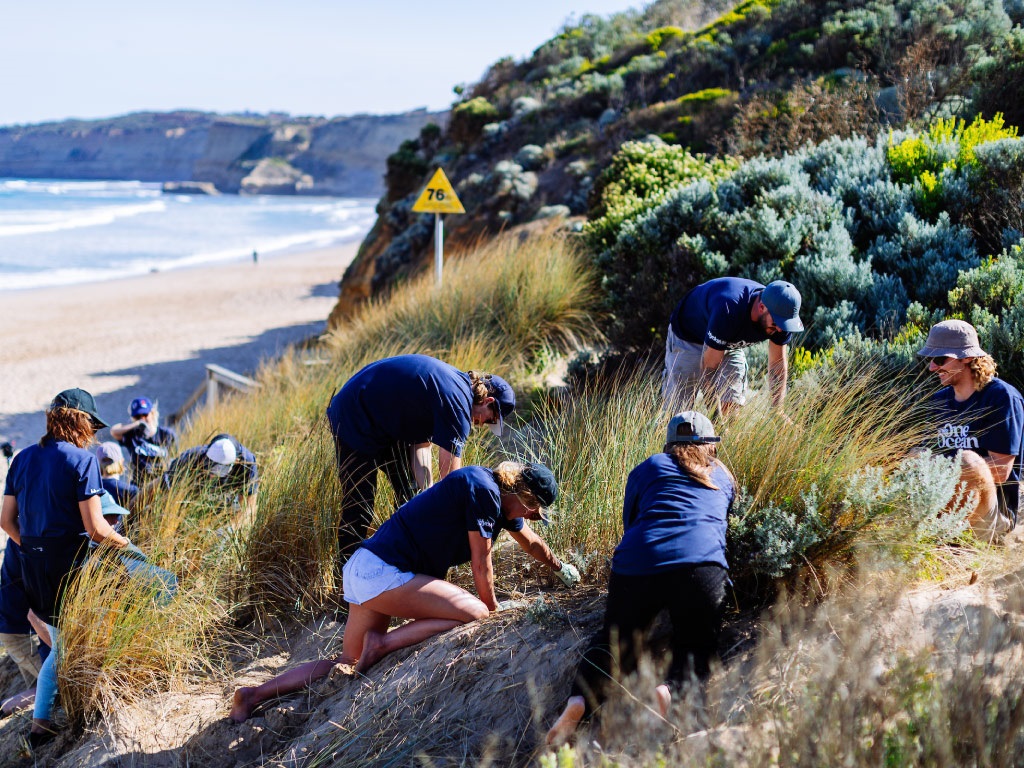Surfers get their hands dirty at Jan Juc in the name of dune health
Published on 04 April 2023

Arriving at popular surf breaks such as Bells Beach, surfers have their eye on one thing only; the swell!
While the ocean is a surfer’s playground, it’s the forgotten dune systems that sit behind the beaches that play an important ecological role and are a defence feature of the landscape.
Dune systems provide a first line of defence against coastal process through supporting native vegetation to bind and build sand, with this vegetation also providing food and shelter to local insects and small mammals. Sand dunes are also time capsules housing significant cultural values that connect the present to the past.

Erosion is one of the biggest challenges facing beaches along the Great Ocean Road on Australia’s south-eastern coast, where the prevailing current starts at Cape Otway and continues east along a diverse and winding landscape.
Although erosion is a naturally occurring coastal process, climate change is changing the severity and frequency of storms which is driving increased erosion in hot spots along the 240-kilomtres stretch of coast. This is placing ecological, cultural and community values at risk.
So when the opportunity presented for professional surfers Sally Fitzgibbons and Lakey Peterson to get their hands dirty in restoration efforts at Jan Juc beach, they jumped at the opportunity.

The pair joined team members from the Authority, Wadawurrung Traditional Owners Aboriginal Corporation, Jan Juc Coast Action the Surf Coast Shire Council to help remove coast tea tree and marram grass from the dune systems.
The removal of these invasive species creates the space for indigenous species such as Pigface (Carpobrotus rossii), Knobby Club-rush (Ficinia nodosa) and Hairy Spinifex (Spinifex sericeus) to be reintroduced into the foredune and incipient dune systems.
It's important work for the southern coastal regions of Australia where less than 25% of pre-European native coastal vegetation remains.
Authority Conservation Supervisor Scott Hives explained the positive impact of reintroducing indigenous species into the dune system.
“Indigenous species such as Pigface, Knobby Club-rush and Hairy Spinifex gradually return incipient dune zones to a low-lying angle and as the energy comes in from the ocean it is dissipated up that slope,” Hives said.
“Species such as coastal tea tree and marram grass change the dune system resulting in what we call ‘cliffing’. This is where the swell comes in and hits the straight edge, gouging the dune and creating an unstable environment which is suspectable to further wave erosion and subsequent coastal recession.
“Over time that leads to a deterioration of our dune systems.”
The restoration works are all part of the WSL One Ocean global initiative aimed at inspiring the surf community to protect our one ocean to preserve the future of the sport.
The program has seen surfers contribute to environmental programs at world championship tour events across the world.
Learning about and restoring coastal ecosystems is important today and for the future of the sport and our incredible coastlines.


Image credit: World Surf League/Lynch